The church was built more than a century ago between 1851-1852 also considered as as one of the oldest Catholic churches in Negros Island. The said church is also known as the longest structure made of corals formed as bricks, hard stones, rocks and other traditional construction material during Spanish Era. Where the name of the city called Valladolid was also originated in Spain the province of Valladolid.
The construction of this Historic Edifice Commence in 1877 under the the administration of FR. Carlos Ubed A. while it's convent was considered the best in the island at the time.
The original structure was altered like the concrete ceiling in order to preserve the historical Spanish church. According to some residents who are currently living in Vallodolid. The spread rumors that the church was destroyed by bomb explosion and structures was burned during the World War including the nearby structures.
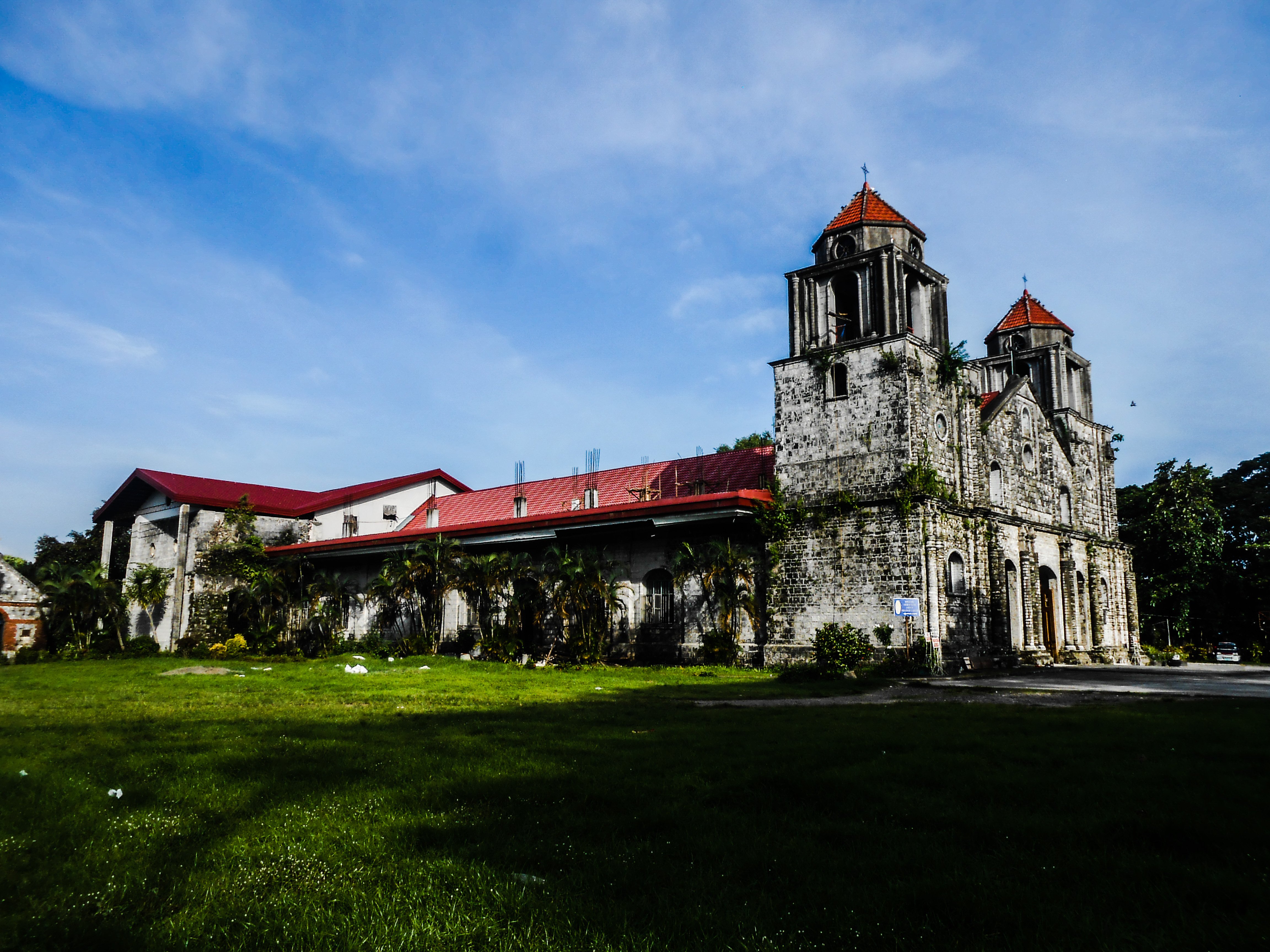
The church is under renovation and everything is not clear to me. I have some questions about the original design of the ceiling before they started fixing the interior. What I saw are the roof attached directly to the metal furring's. No ceiling was installed to calibrate the temperature coming from the roof as it receives direct sunlight that produces heat. However the wide interior is enough where the air can circulate and balance the temperature inside. At same time the open field allows the air to enter at the church.
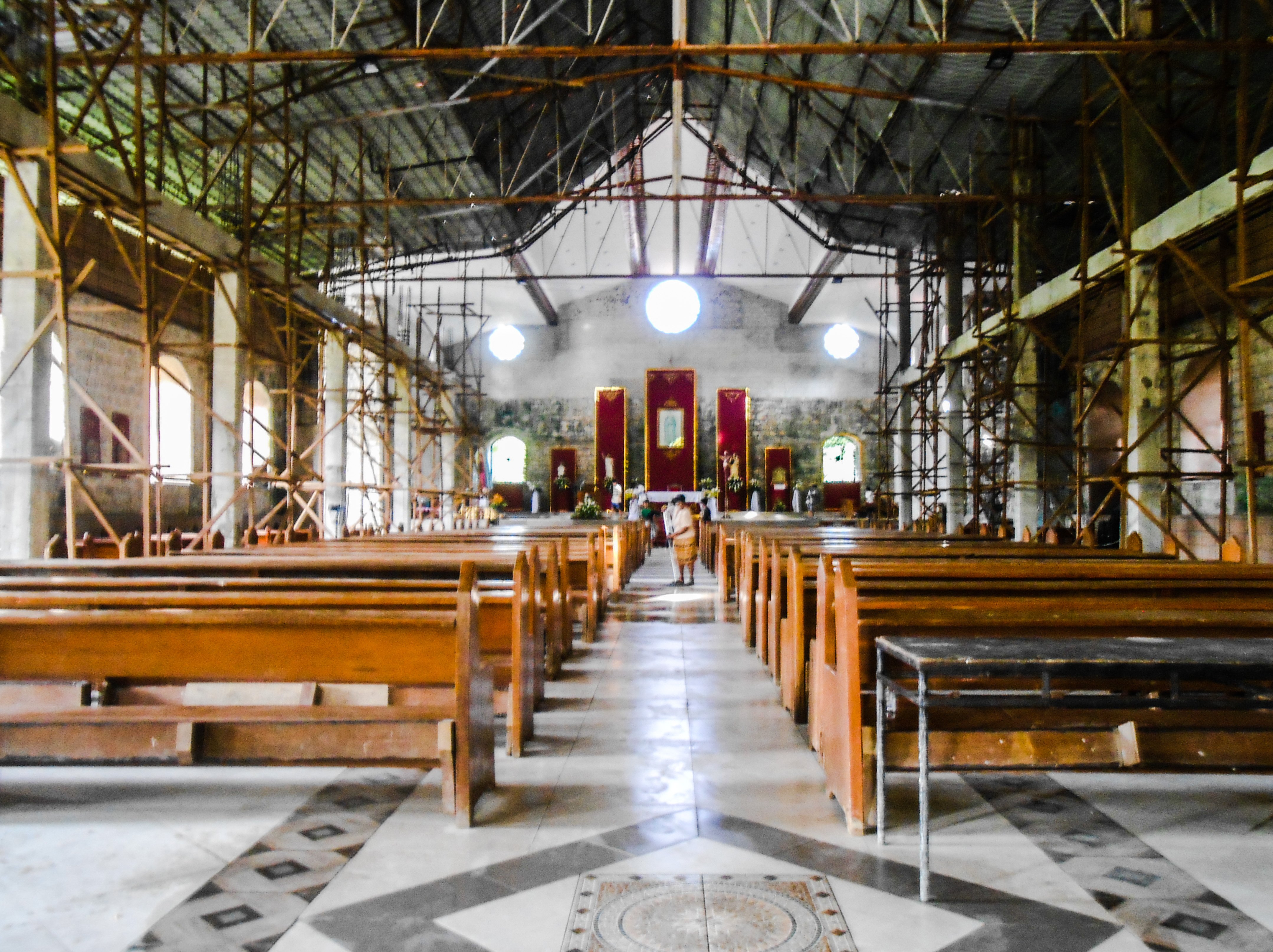
Upon entering there are group of youth and certain devotees who are maintaining the cleanliness of the church. They mop the floor, wipe the chairs and removed the accumulated dust caused by the ongoing construction.
As what you can see on the image this is the only church that religious relics, holy structures, altar accessories and other designs are not fixed on the wall. No hanging decorative fasten on wall corners or any material directly attached to it. That is to prevent and avoid applying pressure on the wall that might destroy or weakens the foundation.
While the altar platform are made of thick well polished marbles. Then the human size patron of Our Lady of Guadalupe is placed beside the altar symbolizes to the faith and love of Our Lady of Guadalupe devotees the patron saint of Valladolid.
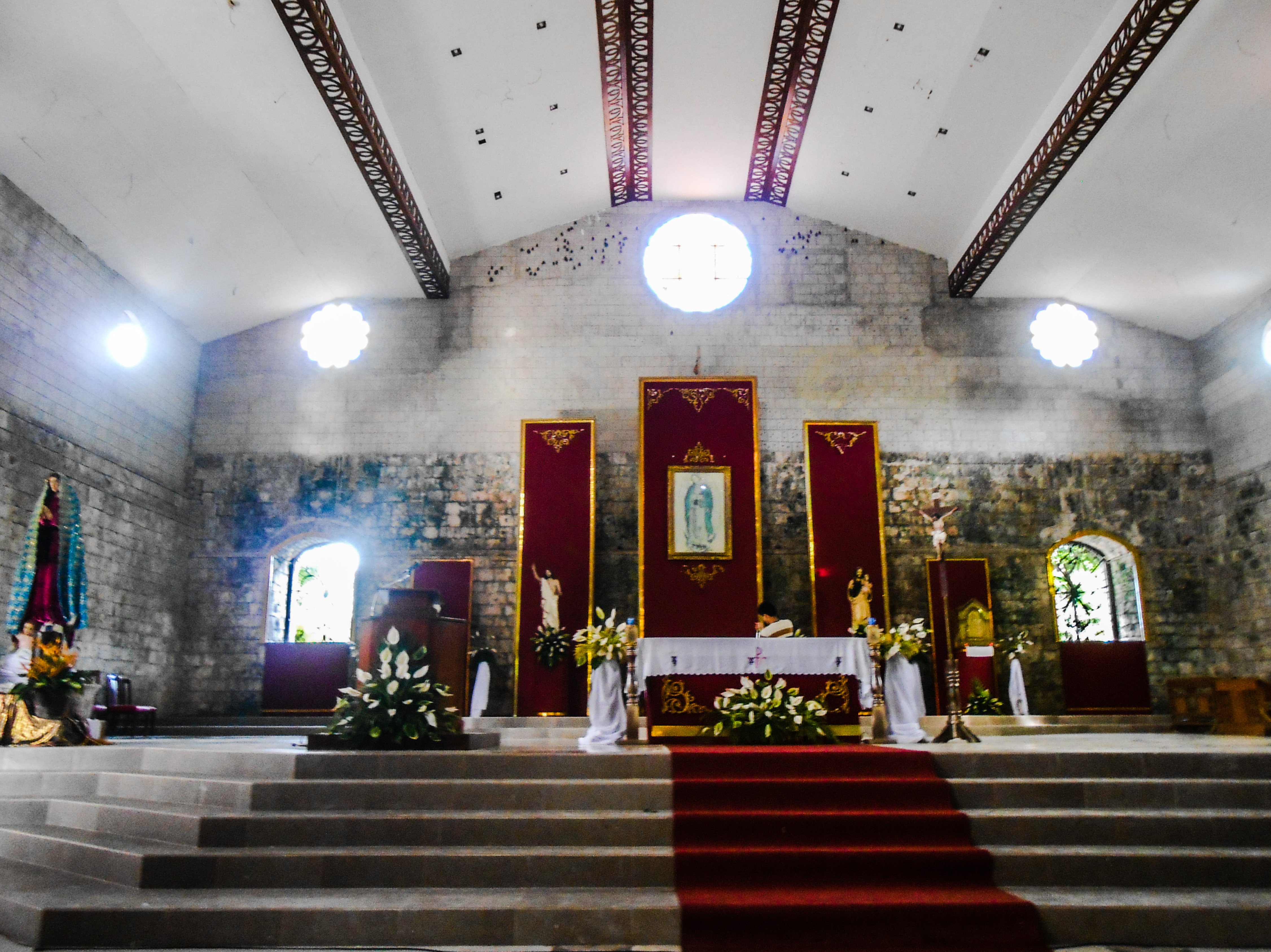
Here is my short video recorded clip when I visited the church. You will be hearing distracting sounds because there are construction people working inside.
A 2 meter wide doubled swing door entrance made of Kamagong trees coated with matte varnish. Then two small single door at both sides shorter than the main door entrance. The similar set-up of corridor visible on the top of main door with available passage at both side. Plus the light reflection coming from the outside passing through the three medium size circular view while other two have fixed stained glass that illuminates the color of yellow and green.
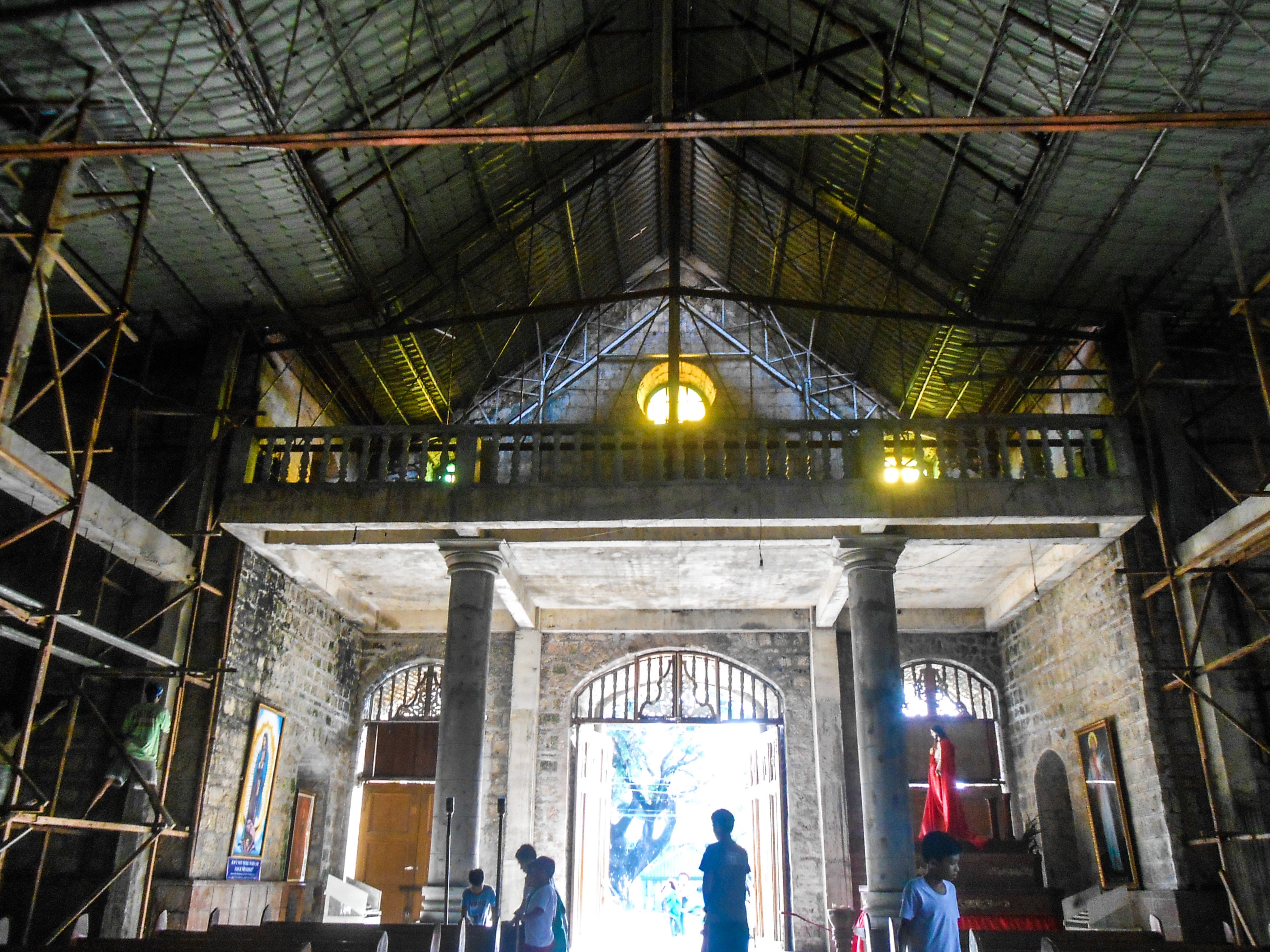
The 70 year old religious wall decorations sculpted on wood fasten on every wall corners. The frames are fixed on 2 x 4 feet flat wood and not nailed or screwed on the walls. They used strong adhesive to secure the wall frames or to keep away from falling.
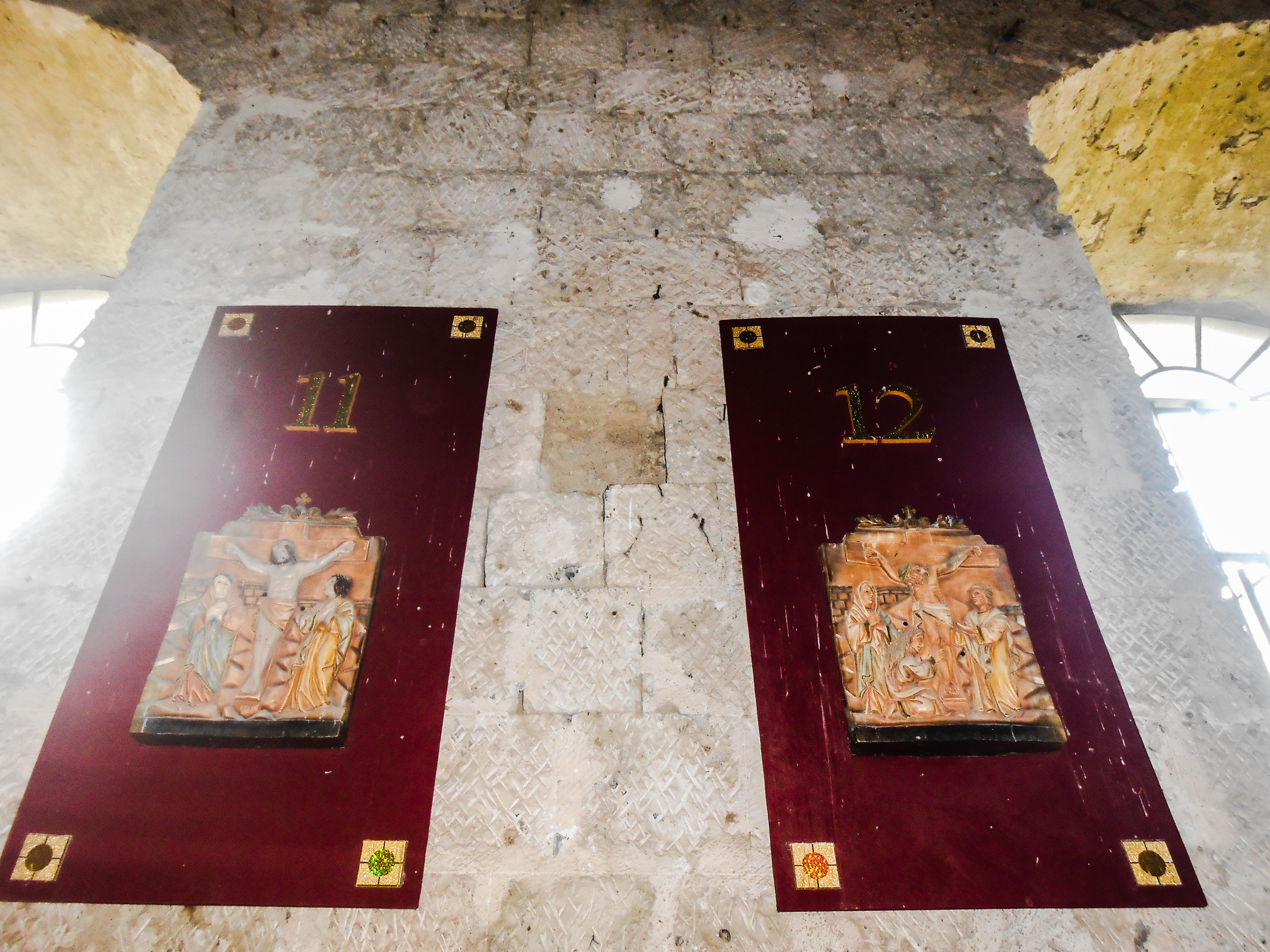
The mobile with replica structure of Christ is place at the entrance. The said manual cart or we called it as " Karosa " a hiligaynon term. Which is mostly visible during the procession and other Diocesan events or during holy week via cruses.
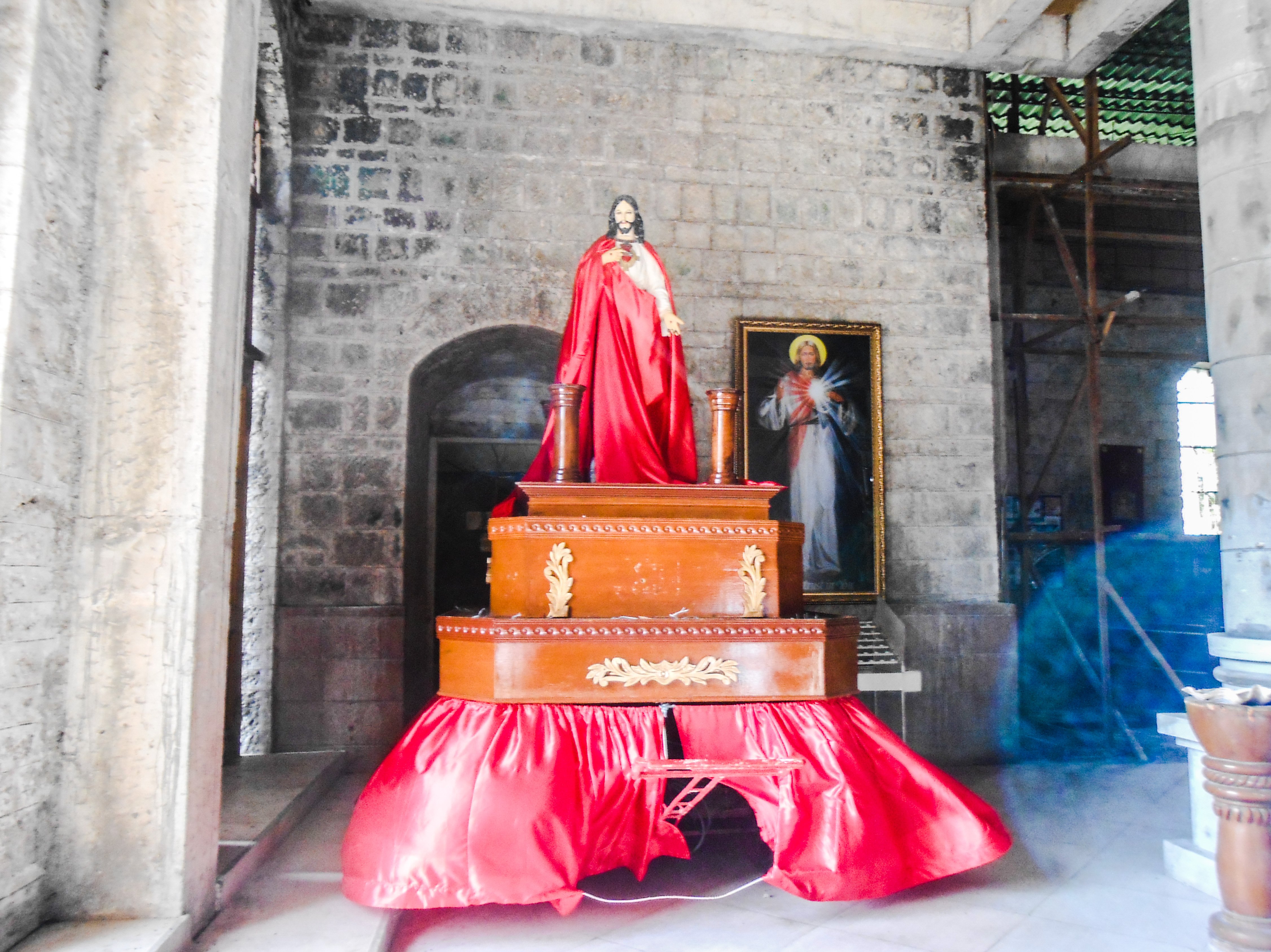
The 2 meter wide swing glass windows are obviously decrepit with rust accumulation. The hinges needs lubricant to loosen the pins and reduce the squeaking sounds. Then some glasses has been broken and permanently removed to avoid any accidents.
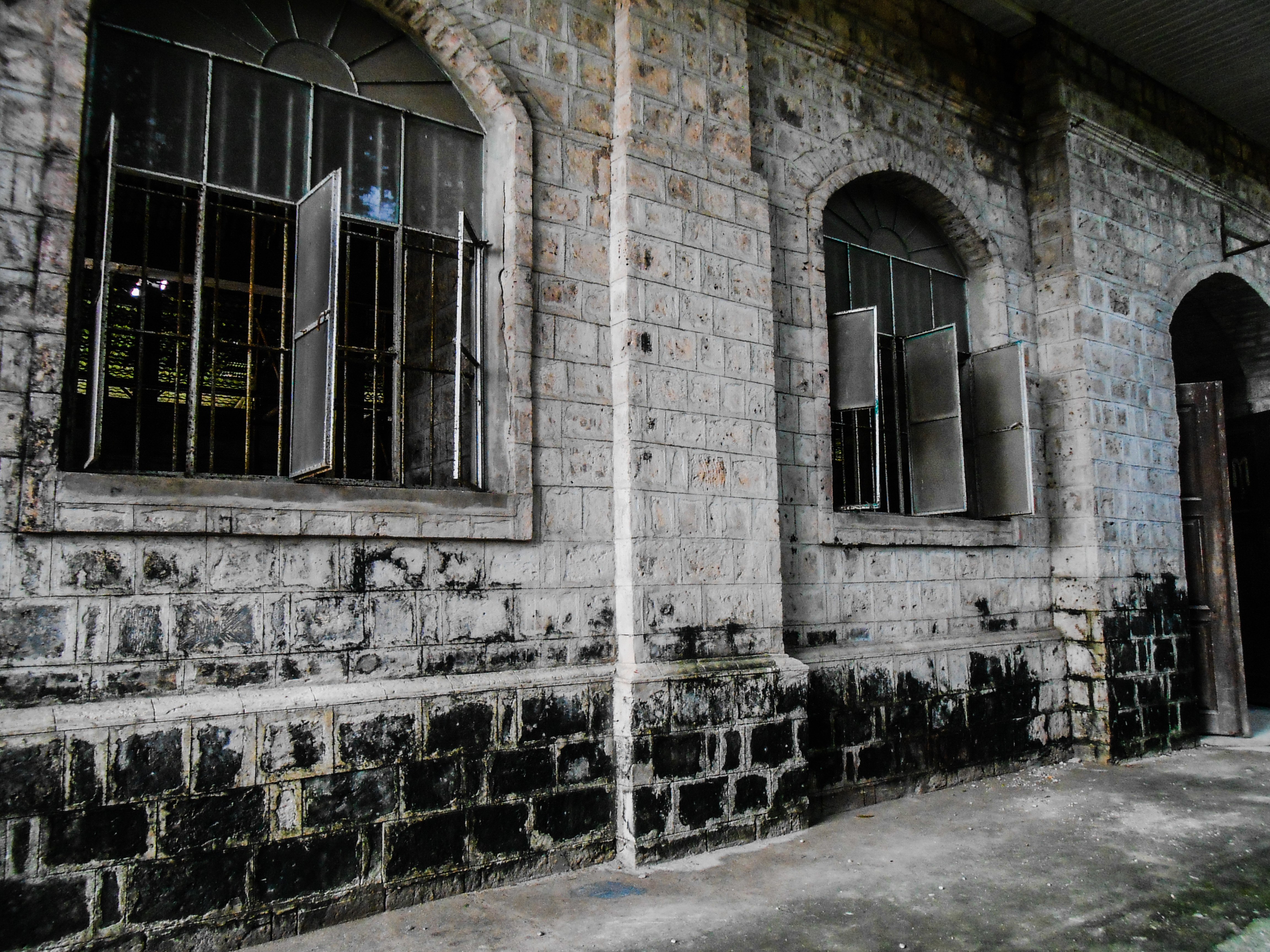
The old patio of the church has been transformed and turned into a garden called " Tepeyac " . The walls are same old with the church, which became part of the old convent of Our Lady of Guadalupe in Valladolid.
The Tepeyac ruins is an additional attraction in Valladolid added to the Facts & history of Negros Island.
Here are some sample of assorted images at the Tepeyac Garden.
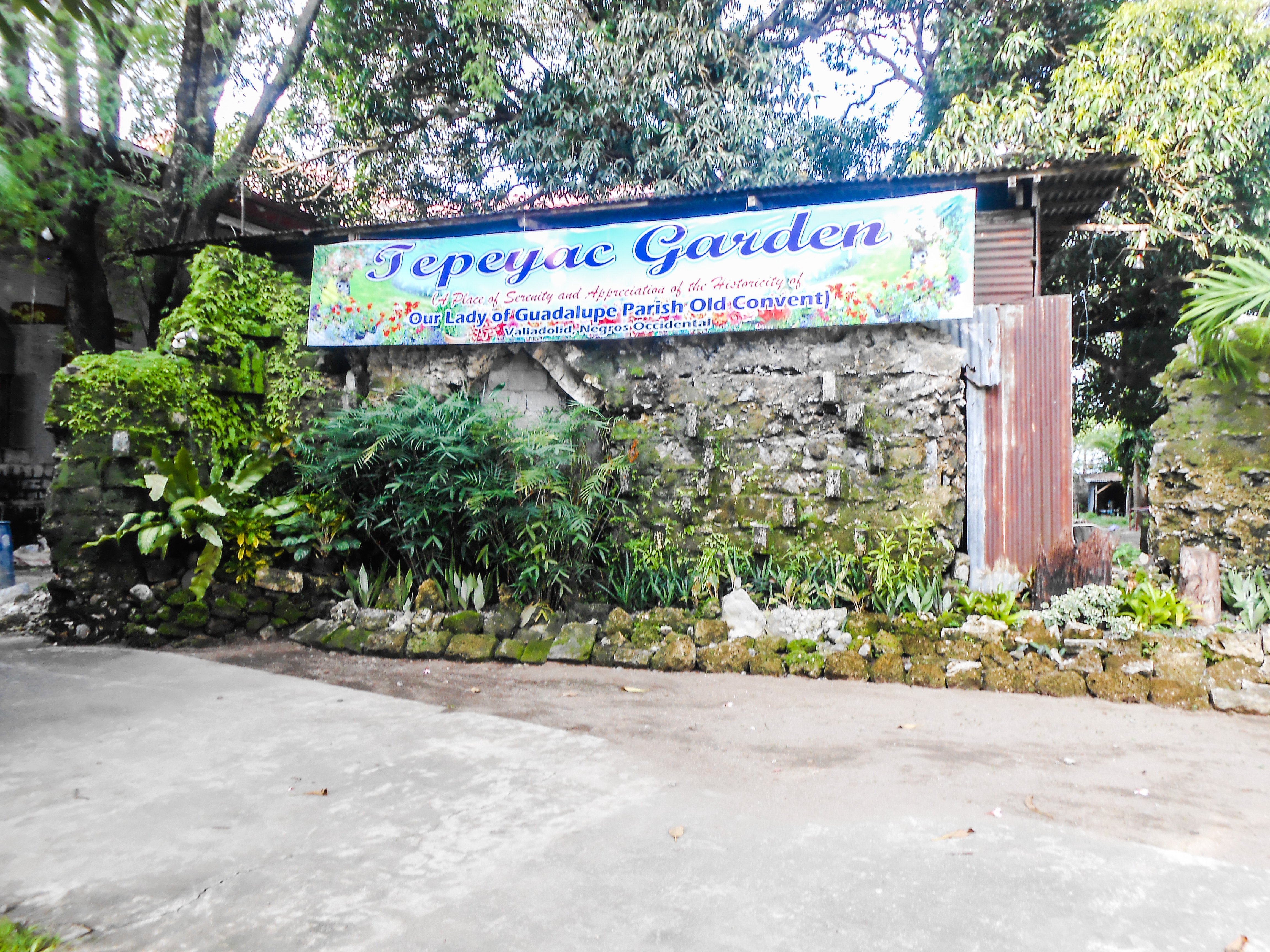

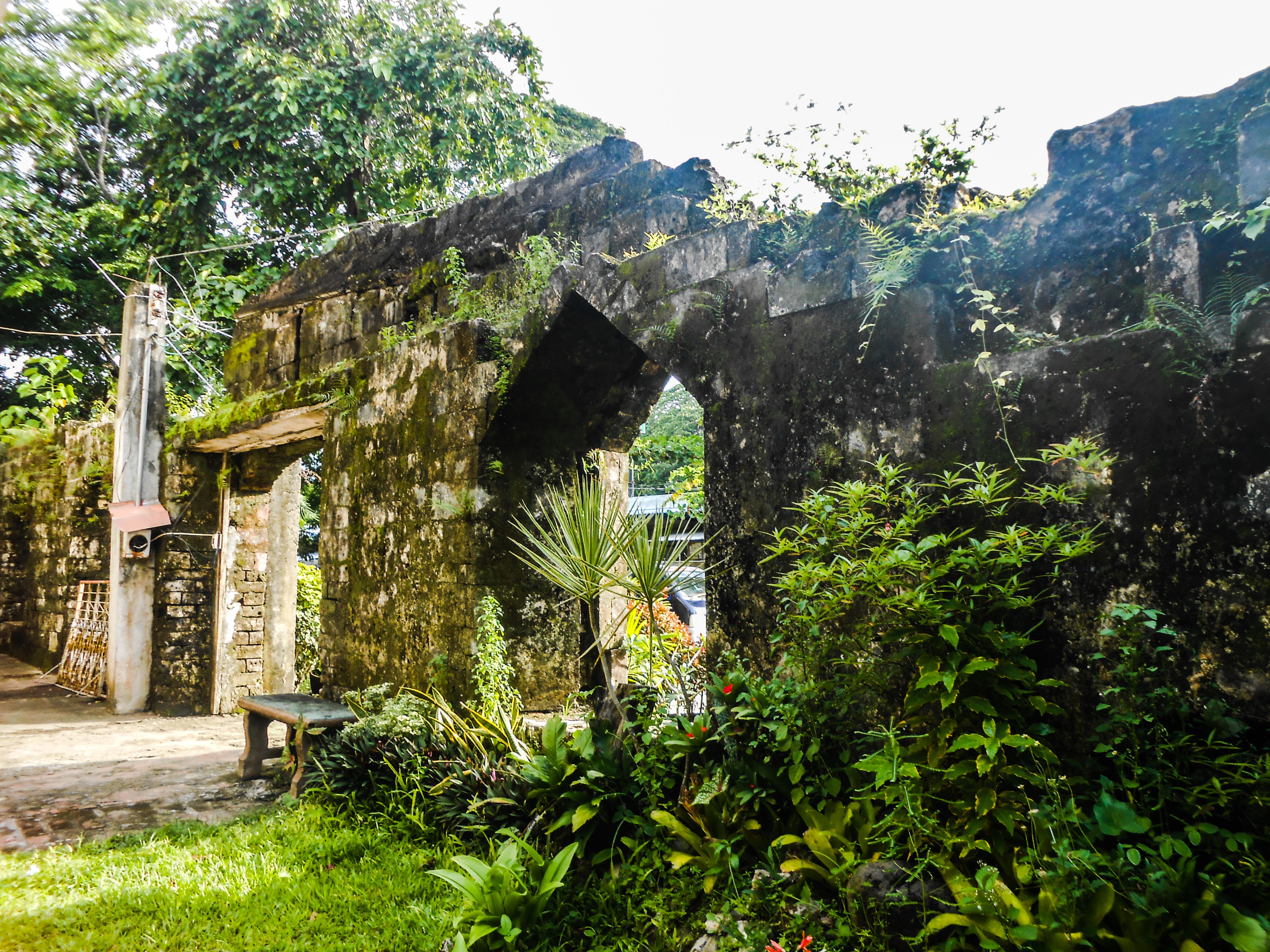

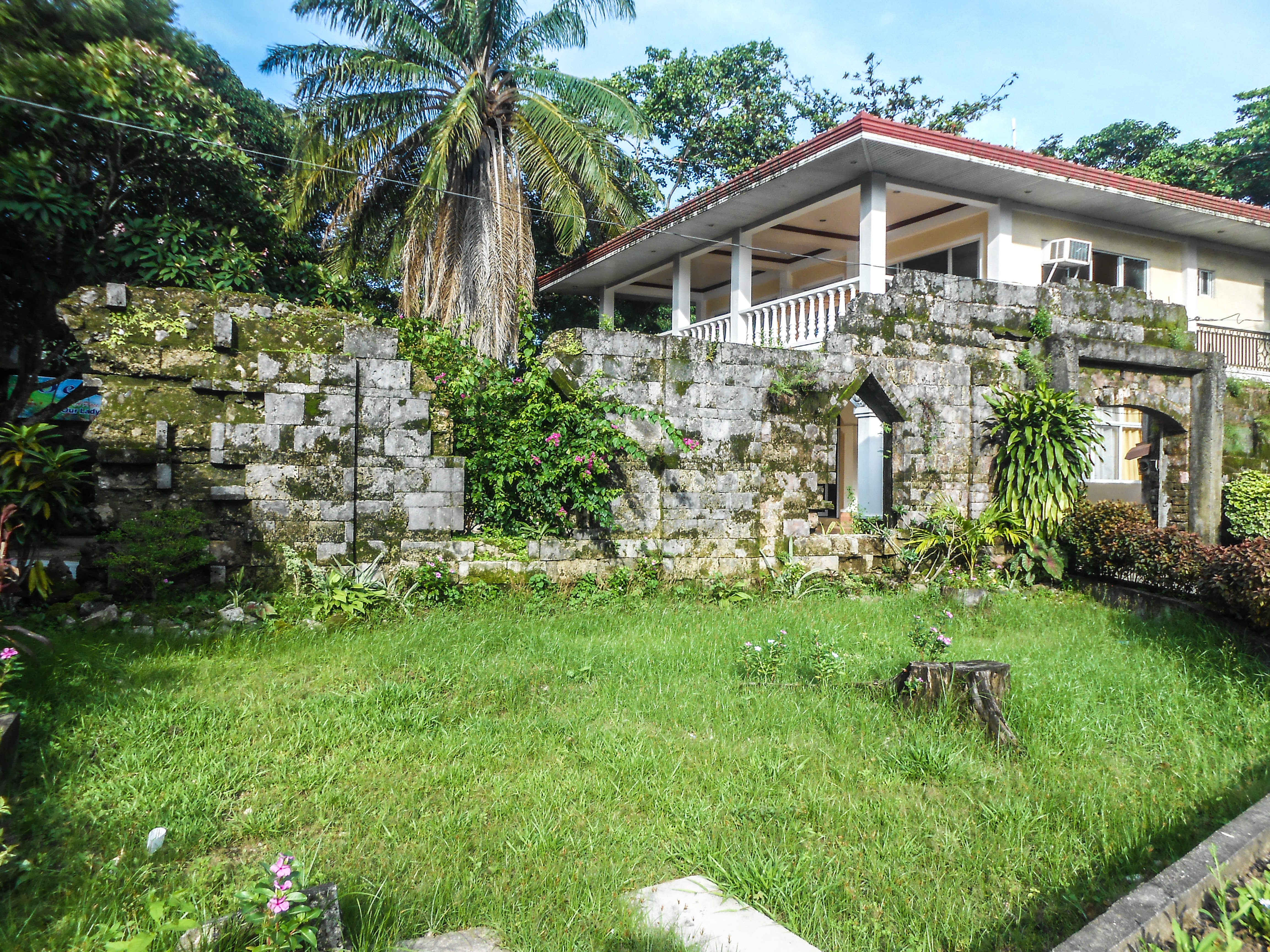

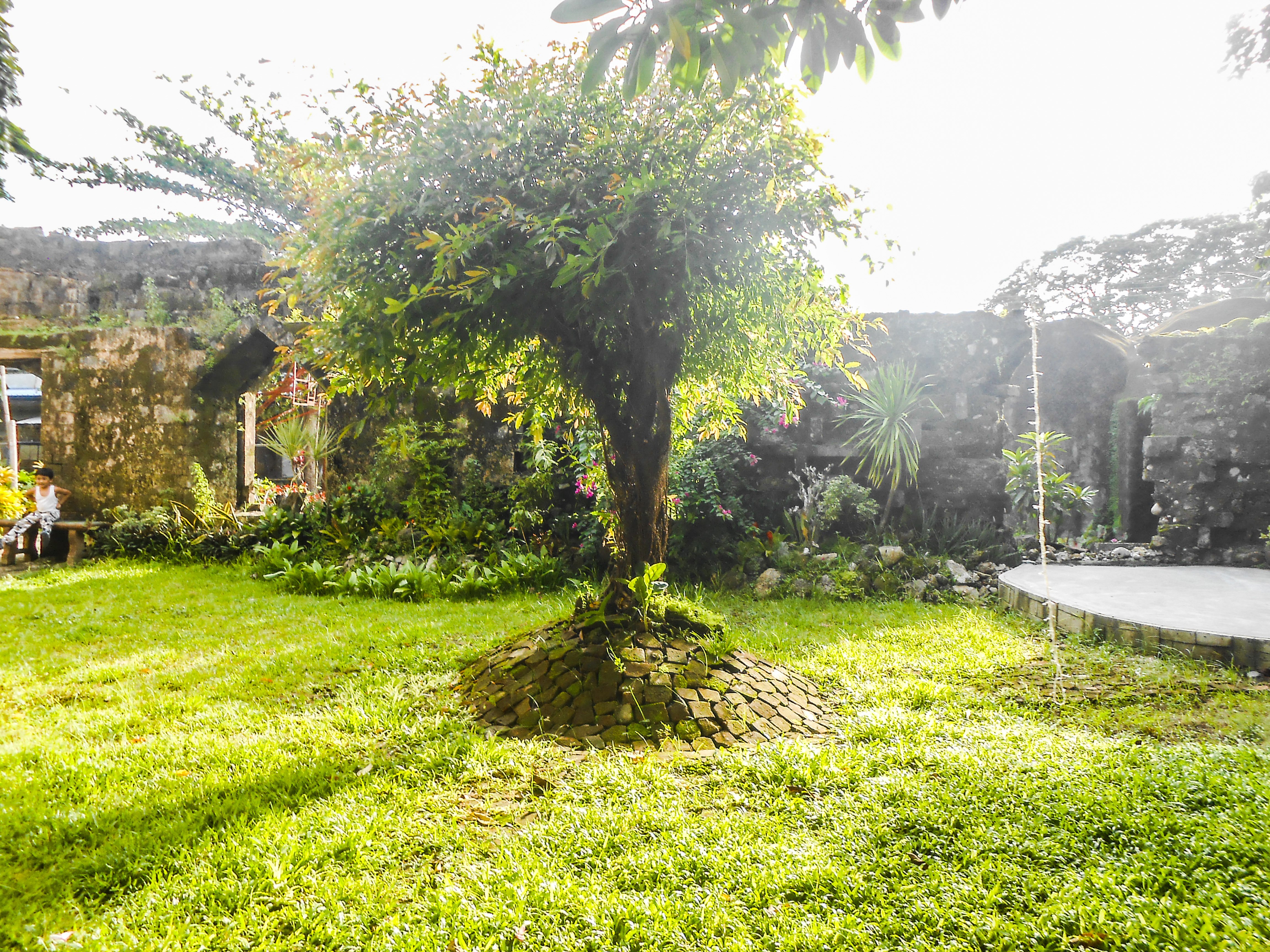

Our Lady of Guadalupe Prayer House
Mr. and Mrs. Hernan " Macoy " R. Lopez, Jr.
with assitance of Architect Alfonso S. Gamboa
Most Reverend Vicente M. Navarra, D.D., Bishop of Bacolod,
assisted by Rev. Fr. Afredo Gamarcha, Parish Priest,
and Rev. Fr. Romulo G. Mendoza, Psrochial Vicar
on the 7th day of March 2004.
Dedicated to the people of Valladolid
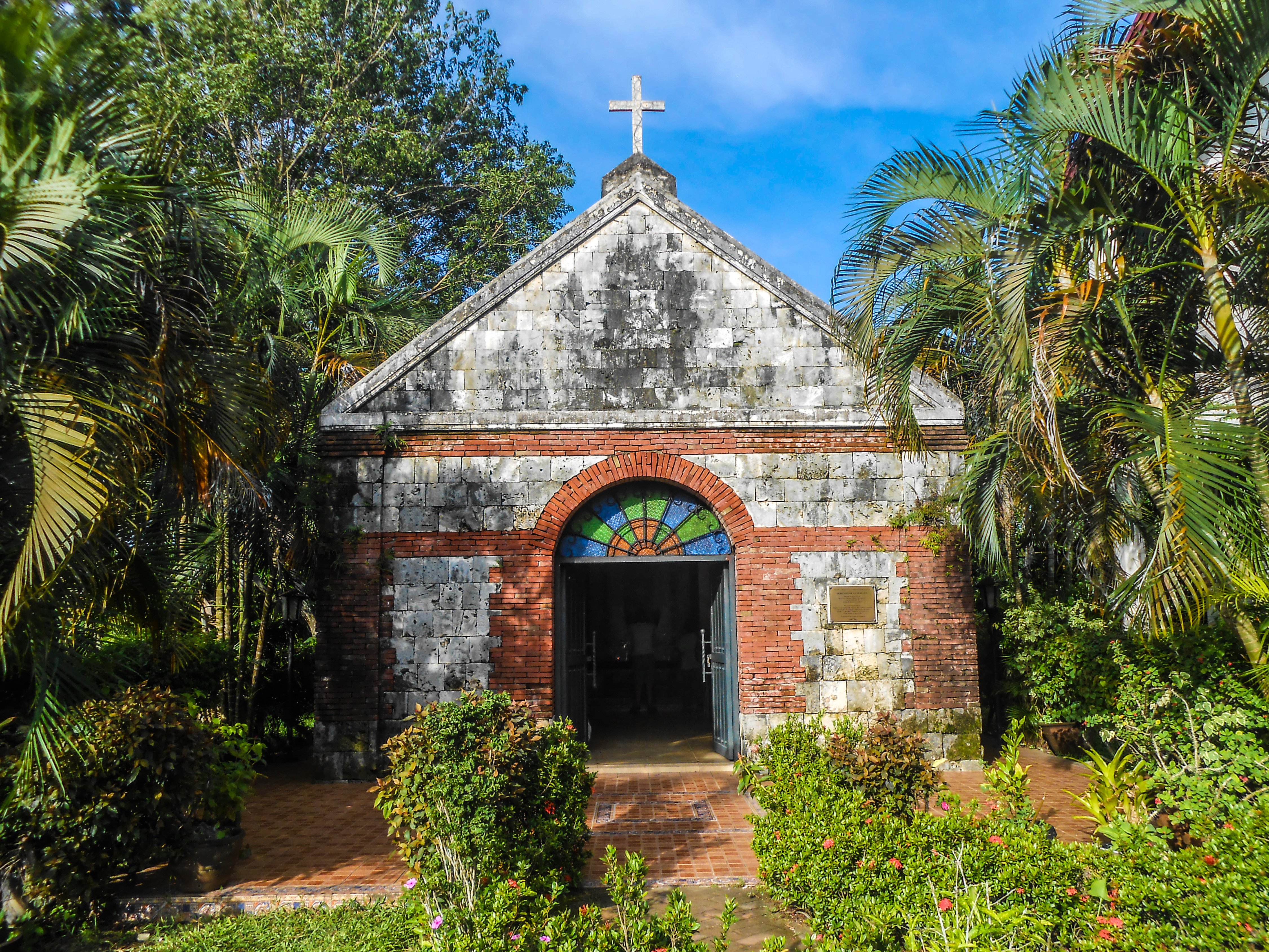
The foot-walk made of 3 x 6 inches brick was formed and constructed for people convenience and to refrain people stepping on the lawn. It is connected from the prayer house going to the wide cemented area of the church.
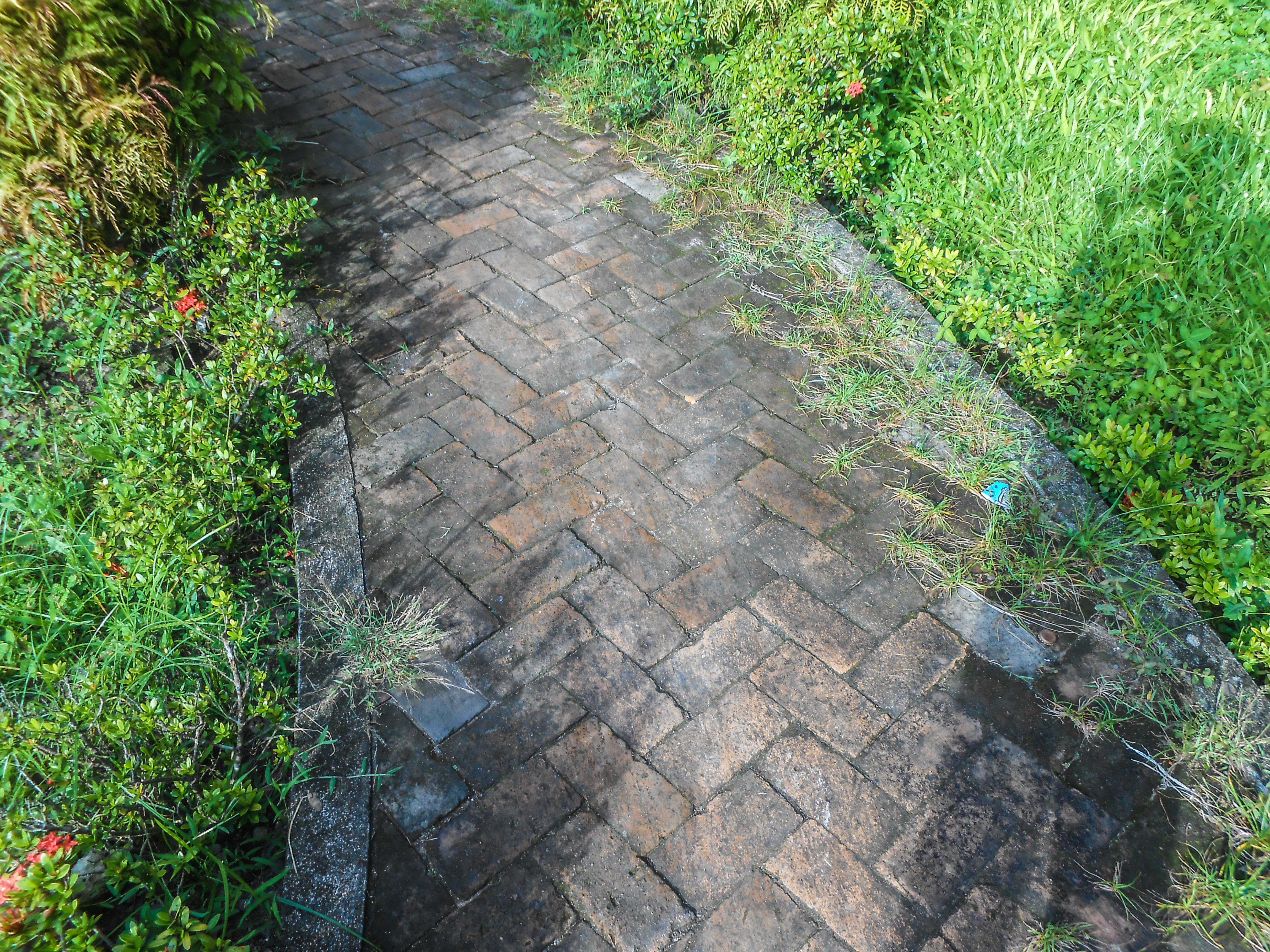
The rich Spanish culture influence in Negros Province has been spread along the region separated by mountain and river banks. Where these old churches signifies what we've been through all over the decades especially during the Spanish invasion. Their contribution to our history added different flavor to filipino culture at somehow.
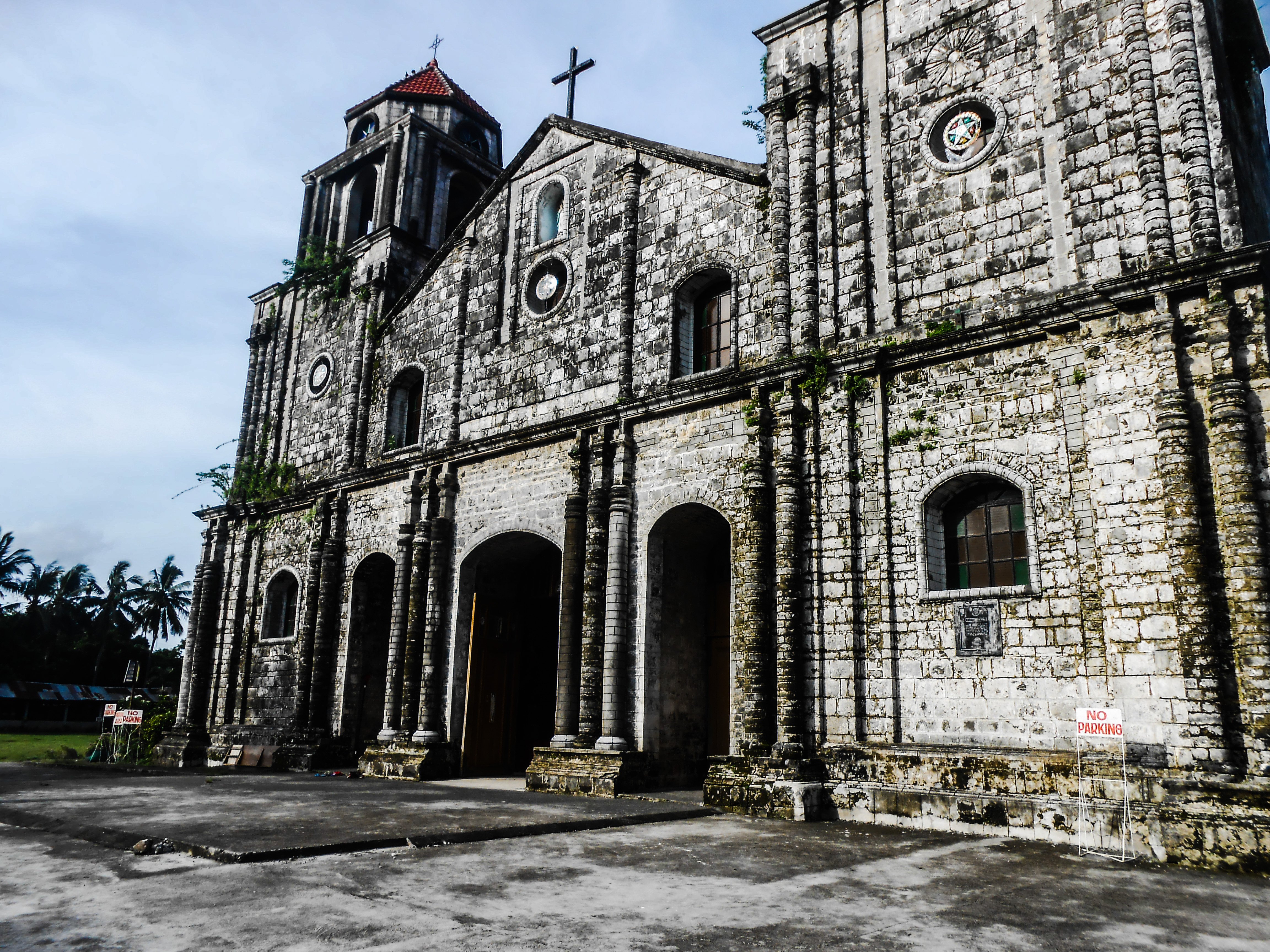
all images are originally mine taken using my Nikon coolpix S2700 camera
Just leave your comments, upvote , and resteem
Thank you for visiting!!

